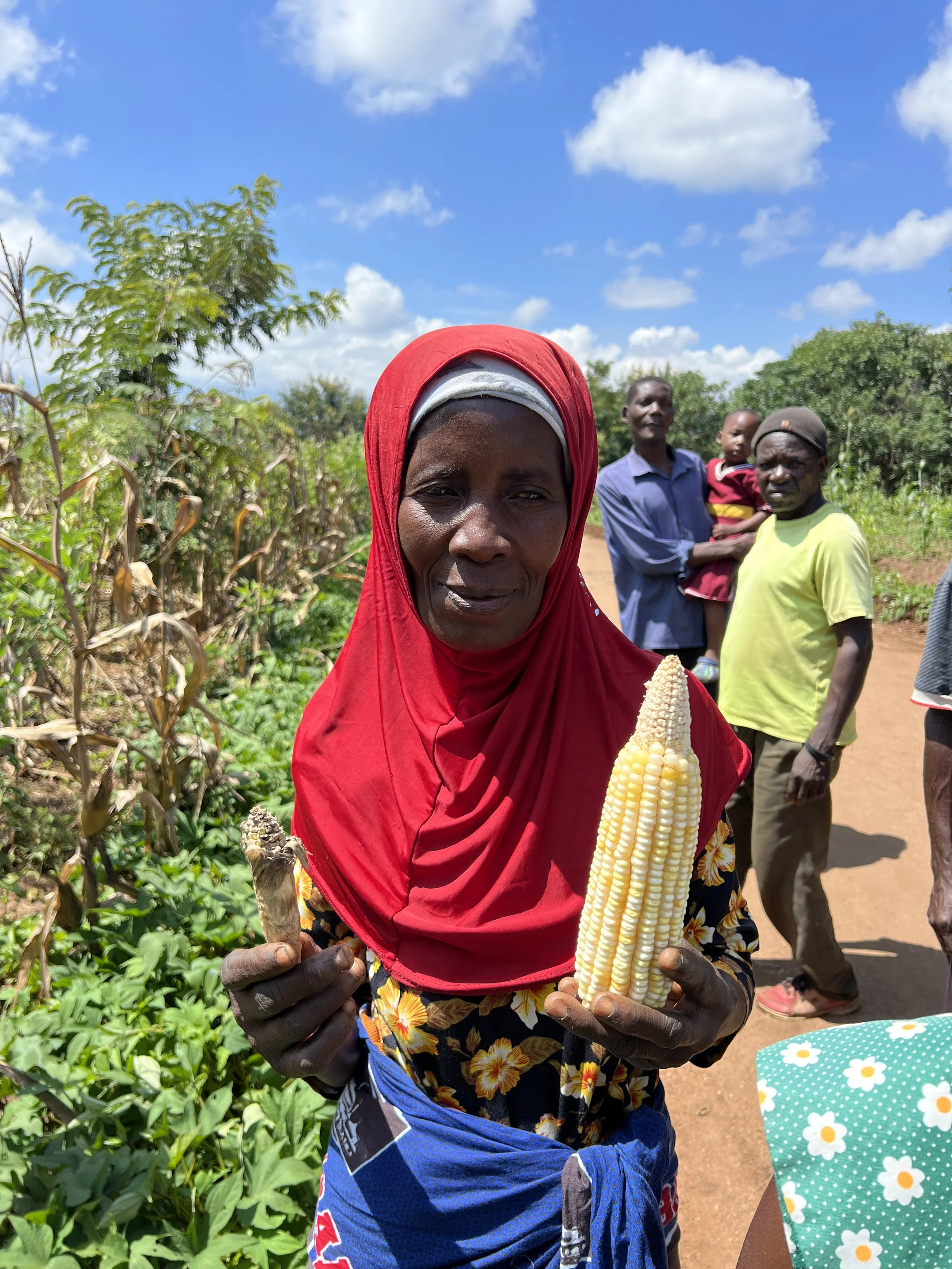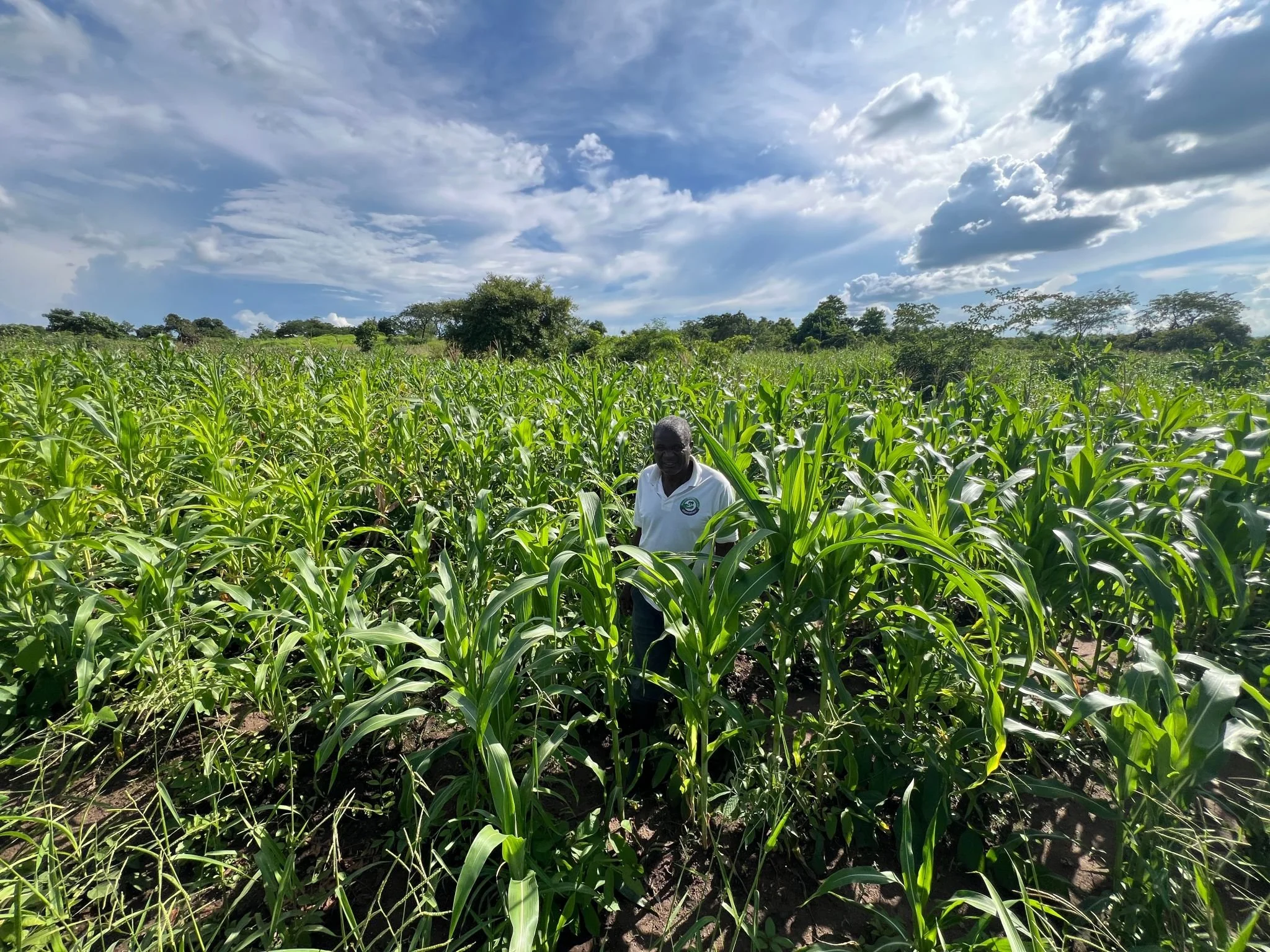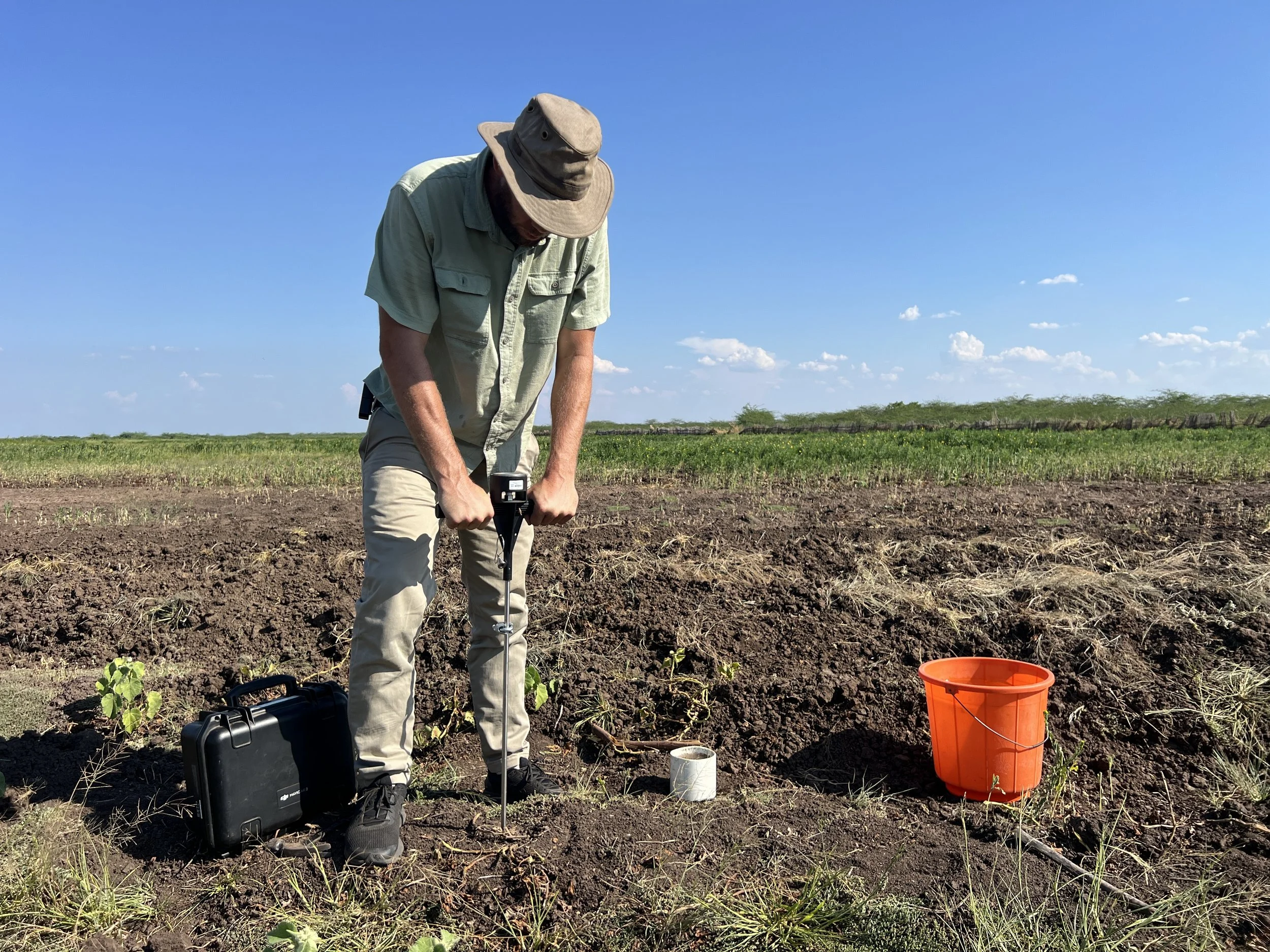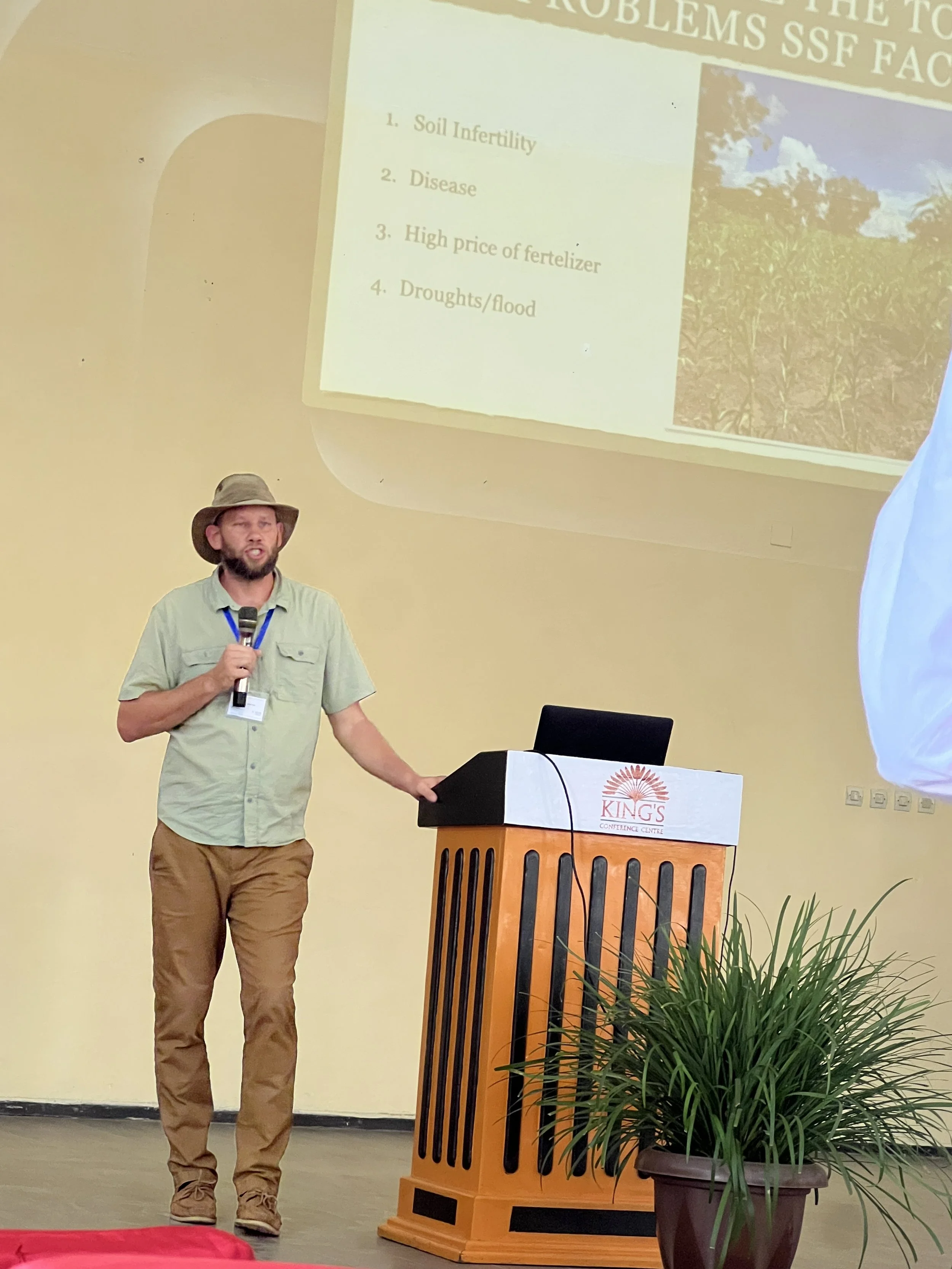Why Regenerative Agriculture
From Depleted Soil to Abundant Systems.
A closer look at the projects, people, and places where regenerative systems are transforming land and livelihoods- from green manure systems to community-led agroforestry.
Ending Hunger Starts with the Soil.
I work side-by-side with smallholder farmers to bring regenerative systems to life- rapidly rebuilding soil, restoring landscapes, and empowered communities.

Gliricidia intercropped in bananas. has innumerable benefits. Keep 70% of the trees managed below for fertilizer and mulch and 30% above the banana canopy for shade.

Shifting from generic agroforestry to green manure agroforestry - with Gliricidia offering direct soil benefits alongside Faidherbia.

At the heart of regeneration: green manure systems that heal soil, support food security, and withstand climate extremes.

Living fence along the river edge with vetiver, bamboo, and bananas — protecting fields and stabilizing soil.

Layered agroforestry systems regenerate soil and address food insecurity by keeping roots in the ground year-round.

Establishing nitrogen-fixing trees for ‘chop and drop’ - a foundational step in regenerating soil and boosting biomass.

Impact
Poor soil leads to poor yields- and poor prospects. But regenerative agriculture flips the script. By rebuilding living soil, smallholder farmers can nourish their families, restore ecosystems, and break cycles of poverty.
This is where transformation begins.
Interested in collaborating?
Book a call with me.
The Approach.
Farmer-led. Soil-centered. System-smart.
Over a decade ago, I began in conservation agriculture but realized we can’t just conserve lifeless soil- we need to rebuild it.
Regenerative systems like green manure and cover cropping offer a powerful solution.
These aren’t monocrop rotations; they’re designed for smallholders, producing nutrient-dense biomass, fixing nitrogen, and reducing labor and input costs over time.
My work focuses on the design and implementation of these regenerative systems through hands-on training, soil diagnostics, and site-specific strategies.
FAQs
-
They are integrated leguminous systems that rapidly rebuild soil fertility and increase food production while decreasing labour demand and overall inputs.
-
By layering drip irrigation with regenerative systems like Gliricidia trees, mulch, and intercropped legumes (like cowpea), farmers can boost soil fertility, conserve moisture, and grow multiple food crops — all while reducing inputs and improving resilience.
-
Yes - and often without the need for chemicals. In one farmer-led example, Gliricidia sepium was used not only as a natural fertilizer and shade tree, but also as a mulch around vegetables. The leaves naturally repelled pests, reducing crop damage and input costs. The result: healthier, better-tasting vegetables and more resilient farming systems - all using local resources.
-
Intercropping Gliricidia with crops like bananas provides multiple benefits. By managing 70% of the trees at a lower height, farmers generate consistent mulch and natural fertilizer. The remaining 30% are left taller to provide partial shade — protecting crops from heat stress. Adding nitrogen-fixing plants like Canavalia or pigeon pea introduces another food crop and boosts soil health. It's a layered, regenerative system designed for resilience and productivity.

Tree planting season in Malawi.

Gliricidia’s taproot and early nitrogen nodules help farmers replace fertilizer and build long-term soil health.

Rebecca’s Gliricidia trees now provide fertilizer, mulch, and cooking fuel — transforming her field into a climate-smart system.

Gliricidia in action: farmers source biomass from mature trees, building fertility until their own trees are ready to manage.

In Malawi, ratooned pigeon pea offers nitrogen, mulch, and shade — a powerful green manure ally for small farms.





